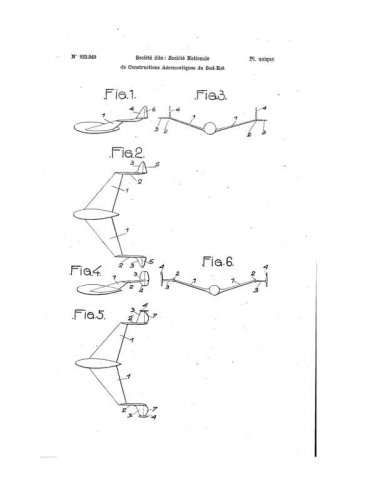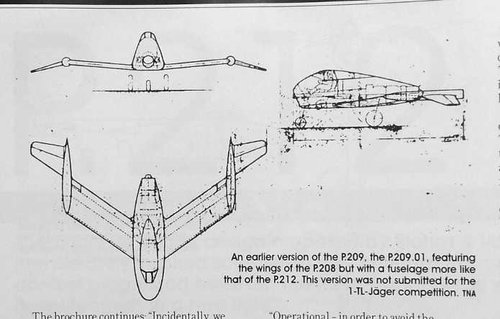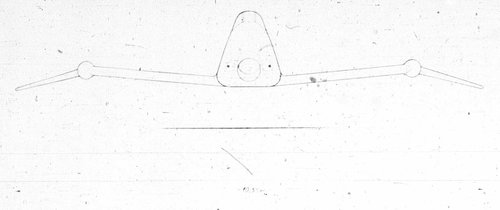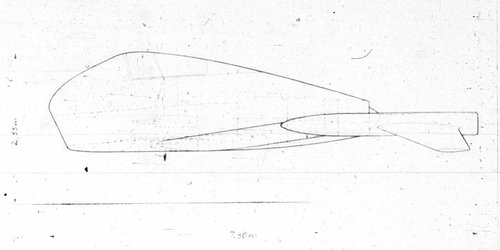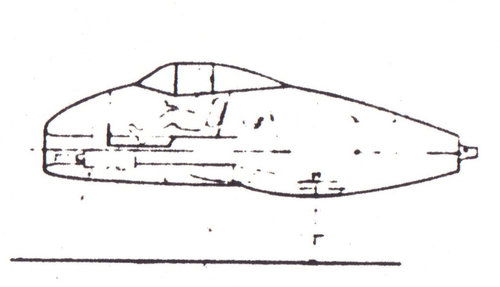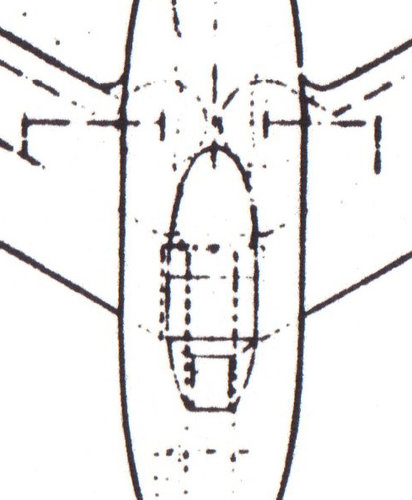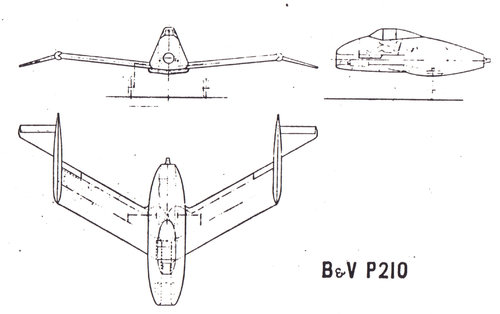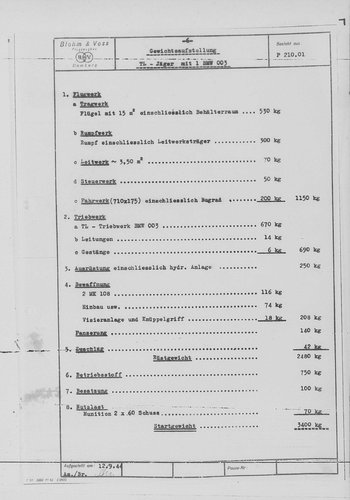Another threaderrection here...
Does anyone have some official documentation on the B+V P.209.01 they'd be willing to share? I have Justo Miranda's RD#15, and I'm quite familiar with Luft'46.com, but neither source gives any original drawings, nor do they list comparable dimensions. All I know for certain is the powerplant, the armament, the wing sweep (not sure if it pertains to the apparent plan sweep or the true sweep relative to the wing), that it had a span of greater than 10m and was less than 8m in length. This really isn't a lot of data!
One thing that I'm particularly interested in is the undercarriage assembly. The wing is generally described as being unburdened with the extra structure required by the landing gear, and was thus able to accommodate a large, unobstructed volume for fuel. However, where the undercarriage would need to retract looks like it would compromise the strength of the wing box or center fuselage in general. Or rather, this looks like it would be the case if the wheels stay in the vertical when tucking up into the fuselage, like many German designs from this period are want to do. This is a problem as fuselage side space is at a premium in this design, with the sides holding onto the cannon and the ammunition boxes. Is it possible the undercarriage made a 90 degree rotation to fit horizontally into a pair of deep wells in the forward fuselage?

